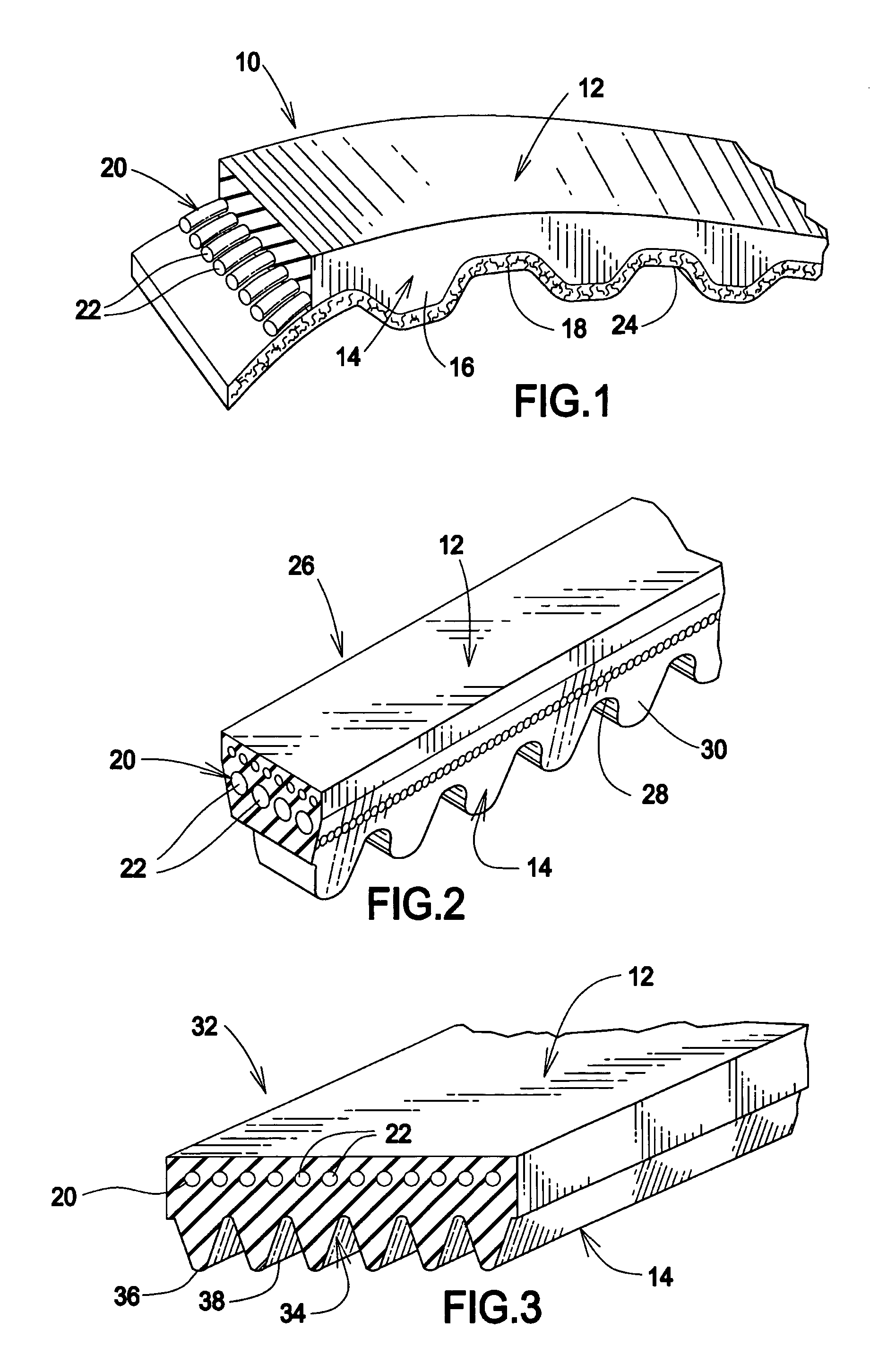High temperature polyurethane/urea elastomers
a polyurethane and urea technology, applied in the field of molding polyurethane/urea elastomers, can solve the problems of hydroxyl-terminated chain extenders, polyurethane elastomers, and decreases in thermal stability initially observed with increasing time and usage, and achieves high and low temperature resistance properties
- Summary
- Abstract
- Description
- Claims
- Application Information
AI Technical Summary
Benefits of technology
Problems solved by technology
Method used
Image
Examples
Embodiment Construction
[0018]Referring to FIG. 1, a typical timing belt 10 is illustrated. The belt 10 includes an elastomeric main body portion 12 and a sheave contact portion 14 positioned along the inner periphery of the main body portion 12. This particular sheave contact portion 14 is in the form of alternating teeth 16 and land portions 18. A tensile layer 20 is positioned within the main body portion 12 for providing support and strength to the belt 10. In the illustrated form, the tensile layer 20 is in the form of a plurality of cords 22 aligned longitudinally along the length of the main body portion 12. It should be understood, however, that any type of tensile layer 20 known to the art may be utilized. Moreover, any desired material may be used as the tensile member, such as cotton, rayon, nylon, polyester, aramid, steel and even discontinuous fibers oriented for low load carrying capability. In the preferred embodiment of FIG. 1, the tensile layer 20 is in the form of the illustrated cords 22...
PUM
| Property | Measurement | Unit |
|---|---|---|
| Temperature | aaaaa | aaaaa |
| Temperature | aaaaa | aaaaa |
| Temperature | aaaaa | aaaaa |
Abstract
Description
Claims
Application Information
 Login to View More
Login to View More - R&D
- Intellectual Property
- Life Sciences
- Materials
- Tech Scout
- Unparalleled Data Quality
- Higher Quality Content
- 60% Fewer Hallucinations
Browse by: Latest US Patents, China's latest patents, Technical Efficacy Thesaurus, Application Domain, Technology Topic, Popular Technical Reports.
© 2025 PatSnap. All rights reserved.Legal|Privacy policy|Modern Slavery Act Transparency Statement|Sitemap|About US| Contact US: help@patsnap.com

